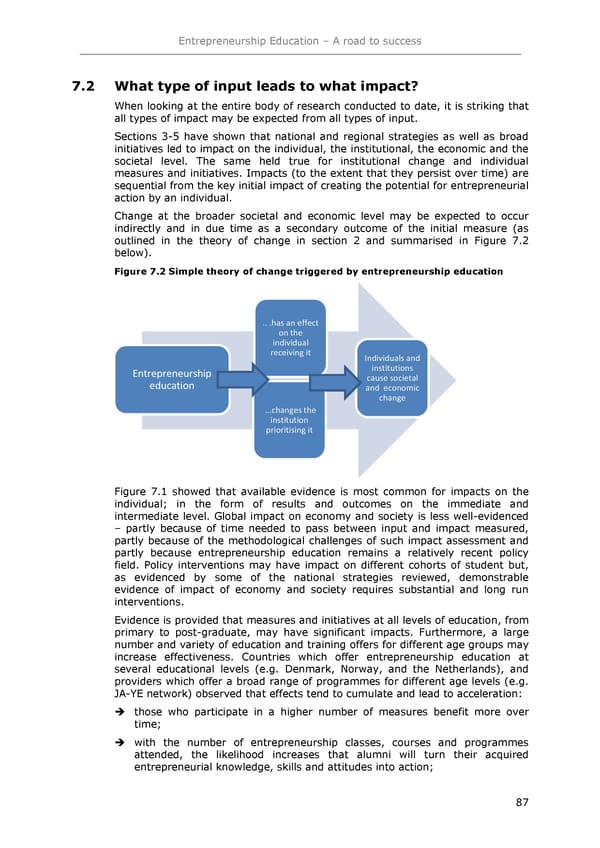Entrepreneurship Education 3 A road to success 7.2 What type of input leads to what impact? When looking at the entire body of research conducted to date, it is striking that all types of impact may be expected from all types of input. Sections 3-5 have shown that national and regional strategies as well as broad initiatives led to impact on the individual, the institutional, the economic and the societal level. The same held true for institutional change and individual measures and initiatives. Impacts (to the extent that they persist over time) are sequential from the key initial impact of creating the potential for entrepreneurial action by an individual. Change at the broader societal and economic level may be expected to occur indirectly and in due time as a secondary outcome of the initial measure (as outlined in the theory of change in section 2 and summarised in Figure 7.2 below). Figure 7.2 Simple theory of change triggered by entrepreneurship education .. .has an effect on the individual receiving it Individuals and Entrepreneurship institutions education cause societal and economic change ...changes the institution prioritising it Figure 7.1 showed that available evidence is most common for impacts on the individual; in the form of results and outcomes on the immediate and intermediate level. Global impact on economy and society is less well-evidenced 3 partly because of time needed to pass between input and impact measured, partly because of the methodological challenges of such impact assessment and partly because entrepreneurship education remains a relatively recent policy field. Policy interventions may have impact on different cohorts of student but, as evidenced by some of the national strategies reviewed, demonstrable evidence of impact of economy and society requires substantial and long run interventions. Evidence is provided that measures and initiatives at all levels of education, from primary to post-graduate, may have significant impacts. Furthermore, a large number and variety of education and training offers for different age groups may increase effectiveness. Countries which offer entrepreneurship education at several educational levels (e.g. Denmark, Norway, and the Netherlands), and providers which offer a broad range of programmes for different age levels (e.g. JA-YE network) observed that effects tend to cumulate and lead to acceleration: those who participate in a higher number of measures benefit more over time; with the number of entrepreneurship classes, courses and programmes attended, the likelihood increases that alumni will turn their acquired entrepreneurial knowledge, skills and attitudes into action; 87
 Entrepreneurship Education Page 90 Page 92
Entrepreneurship Education Page 90 Page 92